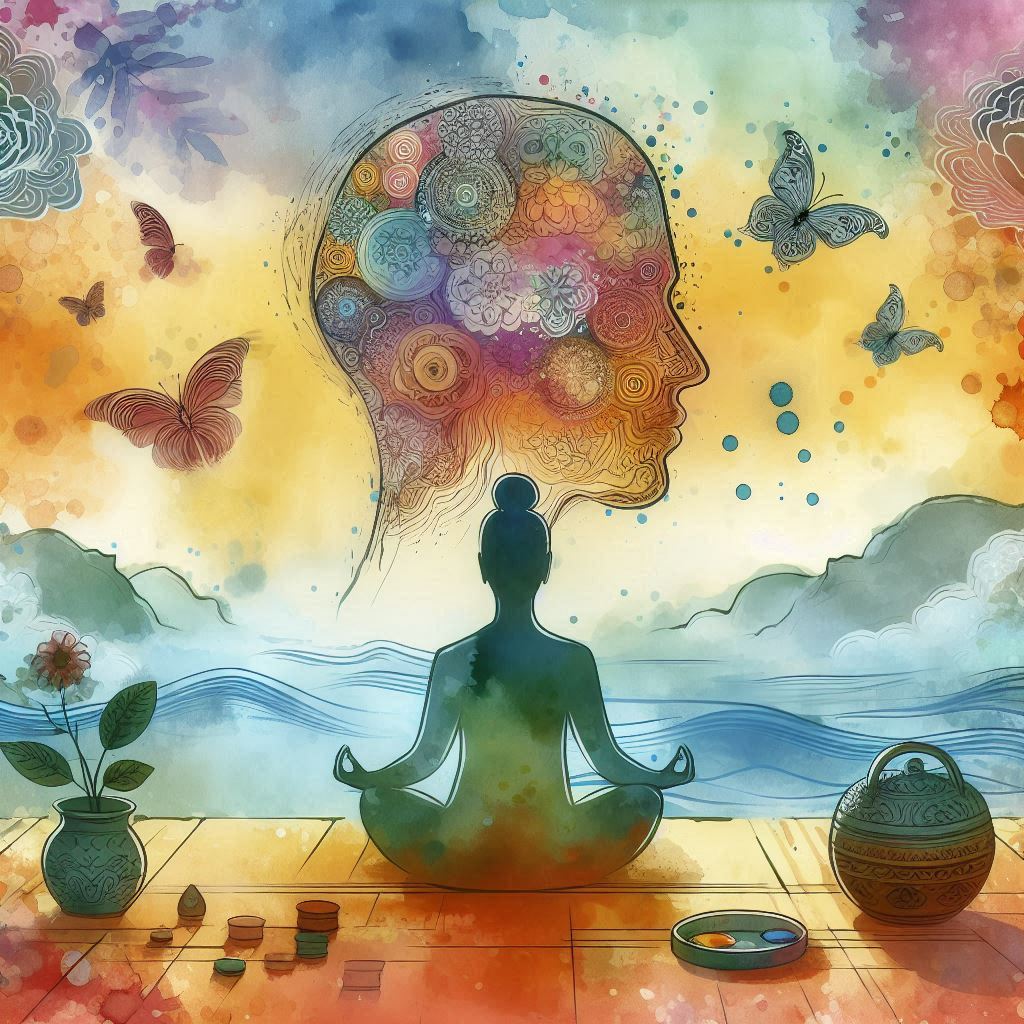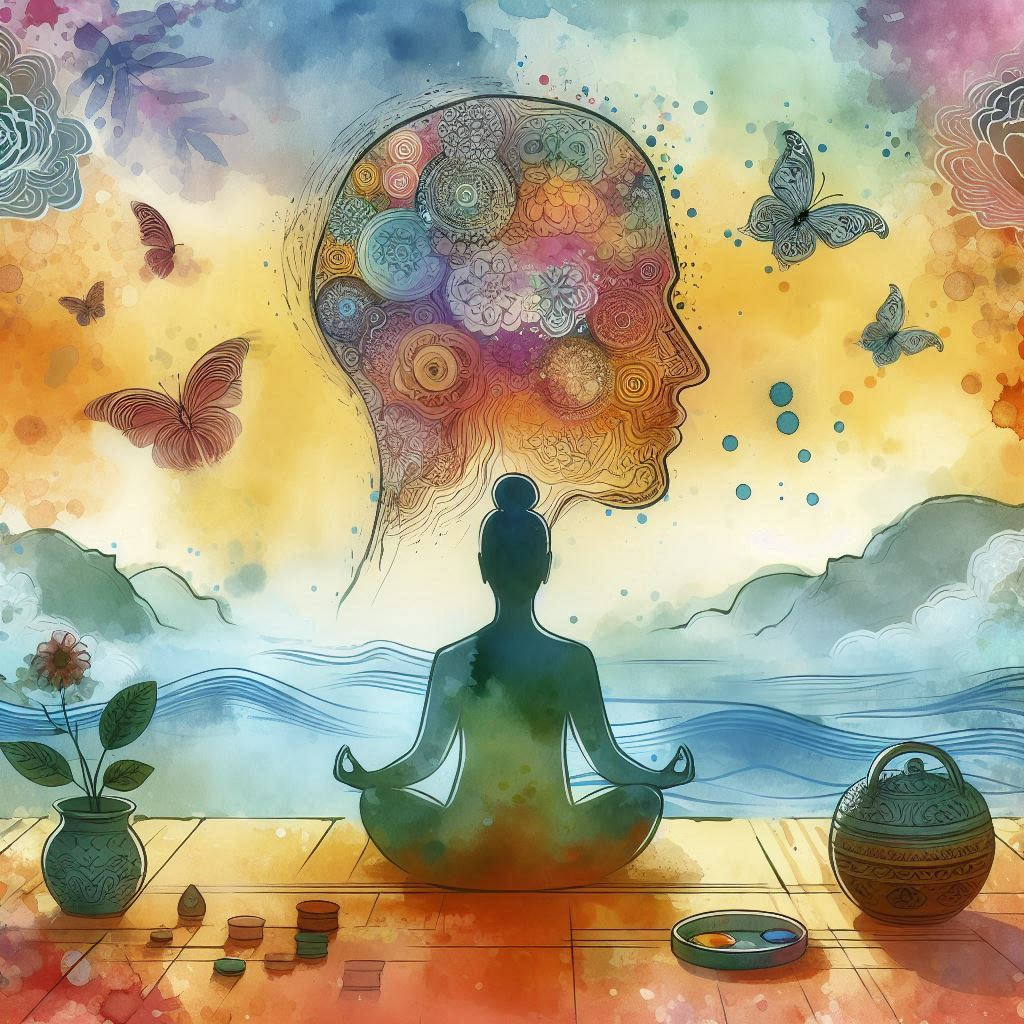Finding Your Zen: A Beginner’s Guide to Mindfulness Meditation
Introduction
In our hectic, fast-paced lives, finding moments of peace can seem like an impossible dream. This is where mindfulness meditation comes in. It’s a practice that allows us to slow down, become more present, and truly connect with ourselves. But what exactly is mindfulness meditation, and how can it benefit you? Let’s dive in and explore.
Understanding Mindfulness
Mindfulness is all about being present in the moment. It’s a mental state achieved by focusing on your current experiences, thoughts, and feelings without judgment. The practice of mindfulness has roots in ancient Buddhist traditions but has become widely popular in modern times as a secular practice for mental and physical wellbeing.

Benefits of Mindfulness Meditation
Mental Wellbeing
Mindfulness meditation is a powerful tool for enhancing mental health. It helps reduce symptoms of depression and anxiety, improves focus and concentration, and boosts overall emotional resilience.
Physical Health
Regular mindfulness practice has been linked to numerous physical health benefits, including reduced blood pressure, improved sleep quality, and a stronger immune system. It can also help manage chronic pain.
Emotional Regulation
By practicing mindfulness, you become more aware of your emotions and learn to manage them more effectively. This leads to better emotional regulation, increased empathy, and improved relationships.
Getting Started with Mindfulness Meditation
Setting Up a Meditation Space
Find a quiet, comfortable space where you won’t be disturbed. It doesn’t have to be elaborate—just a spot where you feel relaxed and at ease.
Choosing the Right Time
Pick a time of day when you can consistently practice mindfulness. Many people find that early morning or late evening works best, but the key is to choose a time that fits into your daily routine.
Basic Techniques for Mindfulness Meditation

Focusing on the Breath
One of the simplest ways to start practicing mindfulness is to focus on your breath. Sit comfortably, close your eyes, and pay attention to the sensation of your breath entering and leaving your body. If your mind wanders, gently bring your focus back to your breath.
Body Scan Meditation
A body scan meditation involves mentally scanning your body from head to toe, paying attention to any areas of tension or discomfort. This practice helps you become more aware of your physical sensations and promotes relaxation.
Noting Thoughts and Feelings
In this technique, you observe your thoughts and feelings without getting attached to them. When a thought or emotion arises, note it (e.g., “thinking” or “feeling”) and then let it pass, returning your focus to the present moment.
Guided Meditation Scripts
Simple Breathing Exercise
“Sit in a comfortable position with your back straight. Close your eyes and take a deep breath in through your nose, feeling your lungs expand. Hold for a moment, then exhale slowly through your mouth. Repeat this process, focusing on the sensation of your breath.”
Body Scan Script
“Begin by bringing your attention to your feet. Notice any sensations in your toes, the soles of your feet, and your heels. Gradually move your focus up your legs, through your hips, your abdomen, your chest, and so on, until you reach the top of your head.”
Loving-Kindness Meditation Script
“Close your eyes and bring to mind someone you care about. Silently repeat the following phrases: ‘May you be happy. May you be healthy. May you be safe. May you live with ease.’ Extend these wishes to yourself and others in your life.”
Resources for Mindfulness Apps
Overview of Popular Mindfulness Apps
There are many mindfulness apps available to help guide your practice. Some popular ones include Headspace, Calm, and Insight Timer. These apps offer guided meditations, mindfulness exercises, and tools to track your progress.
Features to Look for in a Mindfulness App
When choosing a mindfulness app, look for features such as a variety of meditation sessions, customization options, user-friendly interface, and reliable customer support.
Creating a Consistent Practice

Setting Realistic Goals
Start with small, achievable goals. Aim to meditate for just a few minutes each day and gradually increase the duration as you become more comfortable with the practice.
Building a Routine
Consistency is key to reaping the benefits of mindfulness meditation. Incorporate your practice into your daily routine, just like brushing your teeth or having breakfast.
Overcoming Common Challenges
Dealing with Distractions
Distractions are inevitable. When they occur, gently acknowledge them and bring your focus back to your breath or the present moment. Over time, you’ll find it easier to stay focused.
Managing Expectations
Mindfulness is not about achieving a particular state but about being present. Let go of any expectations and simply observe your experiences as they unfold.
Mindfulness in Daily Life
Mindful Eating
Pay attention to the taste, texture, and smell of your food. Eat slowly and savor each bite, fully experiencing the act of eating.
Mindful Walking
Take a walk and focus on the sensation of your feet touching the ground, the movement of your body, and the sights and sounds around you. Walking mindfully can be a powerful way to practice mindfulness.
Mindful Listening
When talking to someone, give them your full attention. Listen without planning your response or getting distracted. This not only improves your listening skills but also strengthens your relationships.
Mindfulness and Stress Reduction
Techniques for Using Mindfulness to Reduce Stress
Mindfulness helps you become more aware of your stress triggers and how you react to them. By practicing mindfulness, you can develop healthier responses to stress.
Real-Life Examples
Consider how a busy professional uses mindfulness to stay calm during a hectic workday or how a parent uses mindfulness to manage the stress of parenting. These real-life examples highlight the practical benefits of mindfulness.
Mindfulness and Emotional Intelligence
Enhancing Emotional Awareness
Mindfulness enhances your ability to recognize and understand your emotions. This increased awareness helps you respond more thoughtfully rather than reacting impulsively.
Improving Interpersonal Relationships
By being more present and attentive, mindfulness can improve your communication skills and strengthen your relationships. You’ll become more empathetic and better able to connect with others.
Advanced Mindfulness Techniques

Visualization
Visualization involves creating a mental image of a peaceful scene or positive outcome. This technique can help reduce stress and enhance focus.
Mantra Meditation
Mantra meditation involves silently repeating a word or phrase to help focus your mind and promote a sense of calm.
The Role of Mindfulness in Personal Growth
Self-Awareness and Self-Compassion
Mindfulness fosters self-awareness and self-compassion, allowing you to understand yourself better and treat yourself with kindness.
Enhancing Creativity and Focus
By clearing your mind of distractions, mindfulness can boost your creativity and help you maintain focus on tasks.
Conclusion
Mindfulness meditation is a powerful practice that can transform your life. By starting small and incorporating mindfulness into your daily routine, you can experience profound benefits for your mental, physical, and emotional wellbeing. Give it a try and discover the peace and clarity that mindfulness can bring.
FAQs
What is the difference between mindfulness and meditation?
Mindfulness is the practice of being present and fully engaged in the current moment, while meditation is a broader practice that can include various techniques, such as mindfulness, to achieve a calm and focused state.
How long should I meditate each day?
Starting with just a few minutes each day is great. Gradually increase the time as you become more comfortable. Even 10-15 minutes a day can be beneficial.
Can mindfulness help with anxiety?
Yes, mindfulness has been shown to reduce symptoms of anxiety by helping individuals become more aware of their thoughts and feelings and respond to them more calmly.
Do I need a teacher to practice mindfulness?
While a teacher can provide guidance and support, you can also learn mindfulness through books, online resources, and apps. The key is to start practicing and find what works best for you.
How quickly can I see the benefits of mindfulness meditation?
Some benefits, such as reduced stress and improved focus, can be felt after just a few sessions. However, the full range of benefits becomes more apparent with consistent practice over time.







